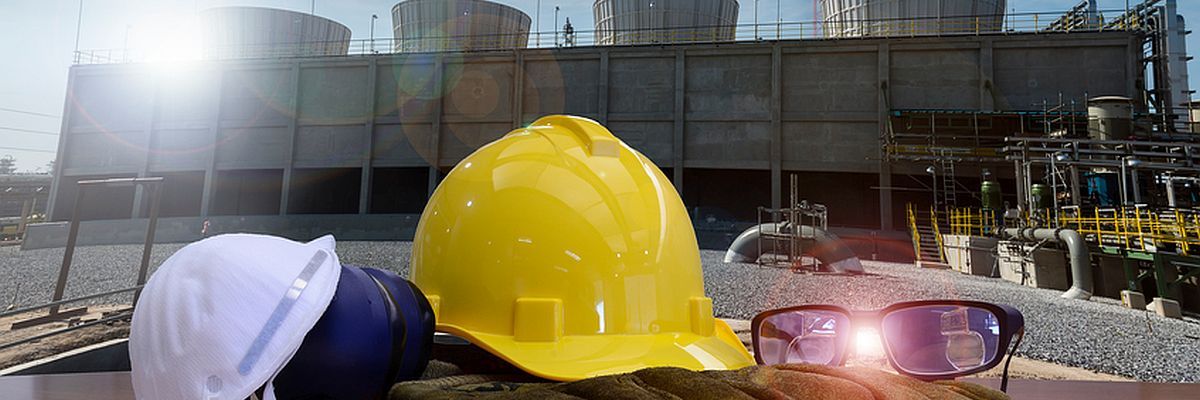- Home
- Services
- Process Hazard & Risk Assessment
- Consequence & Risk Modelling
- COMAH Support
- Offshore Safety
- Functional Safety
- Process Safety Management
- DSEAR Support
- Alarms Management
- Human Factors Management
- Management of Change
- Engineering & Operations Support
- Environmental Risk Management
- Audits & Training
- Asset Risk Management
- Experience
- Philosophy
- Contact Us

Human Factors Management
Human factors (HF) refer to environmental, organisational and job factors, and human and individual characteristics, which influence behaviour at work in a way which can affect health and safety.
Human factors is a relatively new area for many organisations. The lack of a clear understanding of the issues means that companies often do not include human factors in their safety management system (SMS). Some aspects of human factors have always received attention e.g. training (although often without targeting the competencies required for the control of major accident hazards) but they have rarely been deliberately managed as part of an integrated SMS or with the rigour that their contribution to the risk requires.
The lack of effective management of human factors has been a contributory factor in the causes of many major accidents including Piper Alpha, Esso Longford, Zeebrugge, Ladbroke Grove, Texaco Milford Haven, Chernobyl, Bhopal and Grangemouth.
Studies have shown that up to 90% of accidents are attributable to some degree to human failures. For many of these major accidents, human failure was not the sole cause but one of a number of causes, including technical and organisational failures, that led to the final outcome. It is also worth noting that the prevention of major accidents depends to a large degree upon human reliability, no matter the degree of process automation.
At KK Risk, our expertise in human factors has been gained by working on major hazard sites. Our solutions are practical, and based on the principle of proportionality that is directly linked to a client’s major hazard profile, HF knowledge and maturity, and the clients’ strategic business objectives.
Please see below for our range of HF services.
Human factors is a relatively new area for many organisations. The lack of a clear understanding of the issues means that companies often do not include human factors in their safety management system (SMS). Some aspects of human factors have always received attention e.g. training (although often without targeting the competencies required for the control of major accident hazards) but they have rarely been deliberately managed as part of an integrated SMS or with the rigour that their contribution to the risk requires.
The lack of effective management of human factors has been a contributory factor in the causes of many major accidents including Piper Alpha, Esso Longford, Zeebrugge, Ladbroke Grove, Texaco Milford Haven, Chernobyl, Bhopal and Grangemouth.
Studies have shown that up to 90% of accidents are attributable to some degree to human failures. For many of these major accidents, human failure was not the sole cause but one of a number of causes, including technical and organisational failures, that led to the final outcome. It is also worth noting that the prevention of major accidents depends to a large degree upon human reliability, no matter the degree of process automation.
At KK Risk, our expertise in human factors has been gained by working on major hazard sites. Our solutions are practical, and based on the principle of proportionality that is directly linked to a client’s major hazard profile, HF knowledge and maturity, and the clients’ strategic business objectives.
Please see below for our range of HF services.
Competence Assurance
Competence is commonly regarded as the ability to perform the activities within an occupation or function to the standards expected in employment. This definition makes reference to standards. Thus, competence is equated to an ability to perform to the expected standard.
Safety Critical Tasks Identification
Within the COMAH regime, the Safety Report Assessment Manual defines a human action as ‘Safety Critical’ if the failure of the human action could cause or contribute substantially to a major accident, or the purpose of the human action is prevent or limit the effect of a major accident.
Task & Human Failure Analyses
The identification of safety critical tasks must be followed by task and human failure analyses in order to gain a thorough understanding of the tasks and identify safety-critical steps. These safety-critical steps must then be subjected to in-depth analysis.
Procedures Management
Problems with procedures are frequently cited as the cause of major accidents. The main causes are too much reliance placed on procedures to control risk, a failure to follow safe working procedures or the use of inadequate procedures.
Organisational Change Management
Organisational change is a normal and inevitable part of business life in all sectors. But organisations associated with major accident hazards have a greater potential for disastrous consequences. These consequences mean that organisations managing major hazards must aim for much higher reliability than is normally necessary in commercial decision making.